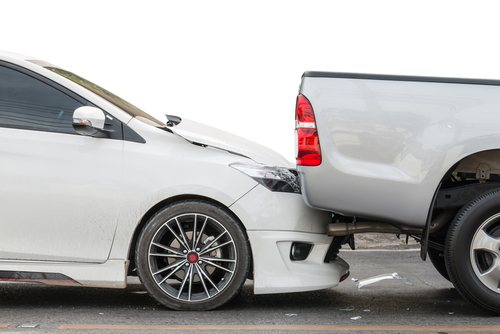While sitting at a red light, the last thing you expect to happen is to be struck by the car behind you. Rear-end collisions are one of the most common types of auto accidents. Most occur when the stopped vehicle is waiting in traffic, waiting to turn left or right, or waiting for a light to change. The police report will frequently place fault on the moving vehicle, usually for following too closely, or for inattentiveness.
The driver of the moving vehicle will often admit liability to the police officer, you, or other witnesses. Insurers pay considerable attention to police reports. However, sometimes carriers or their defense attorneys will claim no liability do to sudden and unexpected stopping, failure to signal when stopping to turn, not yielding when pulling into traffic, or break defect.
An experienced injury attorney, like Accident Lawyer John Fagan, will want to learn about the following items when assessing the certainty of liability in your rear-end collision.
- Vehicle position.
Was your car stopped in traffic waiting for a light to change, turning left or right, slowing down for traffic, waiting to turn into a driveway, etc?
- The other driver’s speed.
What was the approximate speed of the vehicle that struck yours?
- His or her following distance.
Did you see how far away the colliding vehicle was before the crash?
- Your use of turn signals.
If you were about to turn, did you have your turn signal on? For how long?
- The vehicle damages.
Is the damage to each car minimal, moderate, or severe? Do you have any pictures?
- Any driver statements.
Did either you or the other driver say anything about fault at the scene?
- The existence of witnesses.
Were there any impartial witnesses to the accident?
- Any alcohol use.
Were either you or the other driver drinking prior to the accident?
- Any credible passengers.
Did either car have other riders? How persuasive are their accounts of the accident?
- The driving conditions.
Was the road slippery due to rain or snow? Was it sunny, dark, foggy or stormy?
- The functioning of your lights.
Were your signal and brake lights working?
- Any defenses.
Is the insurer suggesting that brake defect, icy conditions, sun in the eyes, your failure to signal, or the like are to blame? Can the insurer prove it?
If you’ve been involved in a rear-end collision, document everything you can about the accident. By collecting the appropriate items, your injury attorney will be better able to assess your case. For assistance in your rear-end collision, call Accident Lawyer John Fagan for a free case review. 904-LAW-1212.





